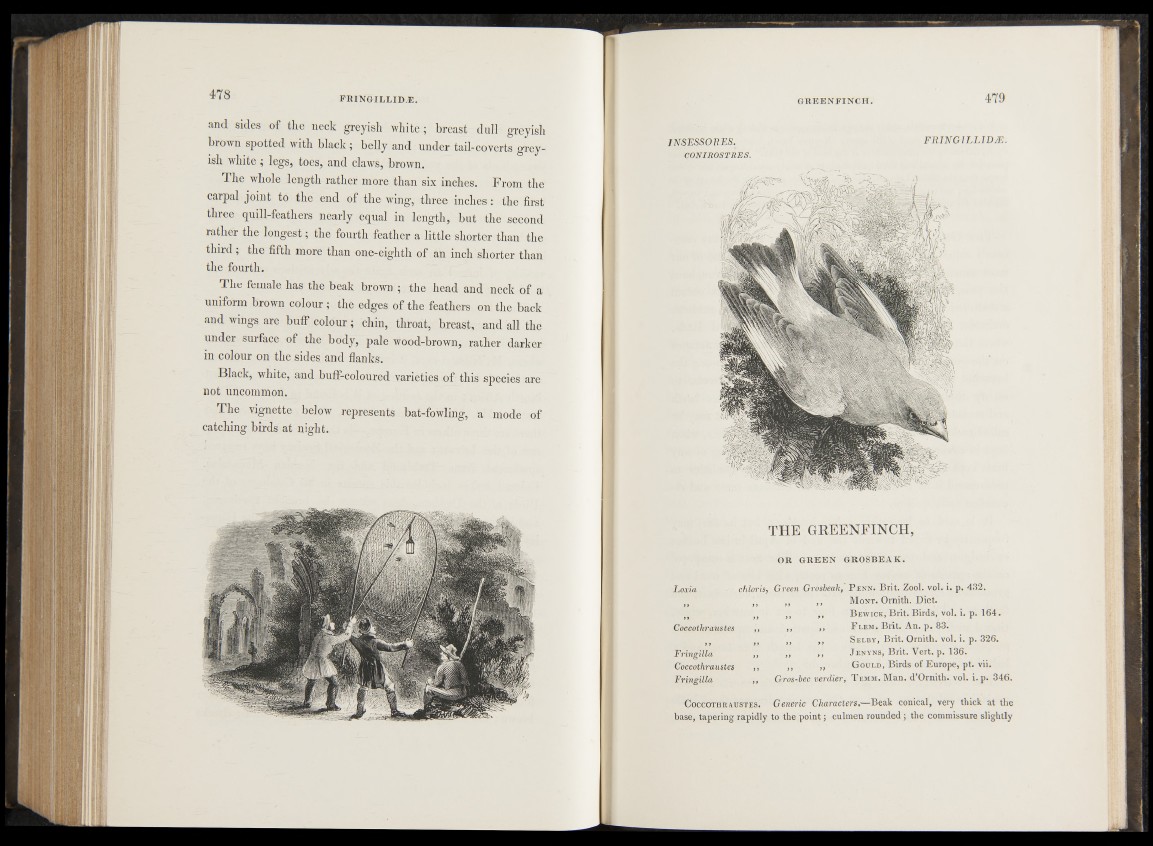
and sides of the neck greyish white; breast dull greyish
brown spotted with black; belly and under tail-coverts greyish
white ; legs, toes, and claws, brown.
The whole length rather more than six inches. From the
carpal joint to the end of the wing, three inches: the first
three quill-feathers nearly equal in length, but the second
rather the longest; the fourth feather a little shorter than the
third; the fifth more than one-eighth of an inch shorter than
the fourth.
The female has the beak brown ; the head and neck of a
uniform brown colour ; the edges of the feathers on the back
and wings are buff colour ; chin, throat, breast, and all the
under surface of the body, pale wood-brown, rather darker
in colour on the sides and flanks.
Black, white, and buff-coloured varieties of this species are
not uncommon.
The vignette below represents bat-fowling, a mode of
catching birds at night.
INSESSORES.
CONIROSTRES.
FRING1LLJDÆ.
TH E G R E EN F IN CH ,
OR GREEN GROSBEAK.
Loxia chloris,
Coccothraustes ,,
Fringilla ,,
Coccothraustes ,,
Fringilla ,,
Green Grosbeak,' P enn. Brit. Zool. vol. i. p. 432.
tt ,, Mont. Ornith. Diet.
| ,, B ewick, Brit. Birds, vol. i. p. 1 6 4 .
,, ,, F lem. Brit. An. p. 83.
\ ,, Selby, Brit. Ornith. vol. i. p. 326.
,, ,, J enyns, Brit. Vert. p. 136.
,, Gould, Birds of Europe, pt. vii.
Gros-bec verdier, T emm. Man. d’Ornith. vol. i. p. 346.
C occothraustes. Generic Characters.—Beak conical, very thick at the
base, tapering rapidly to the point; culmen rounded ; the commissure slightly